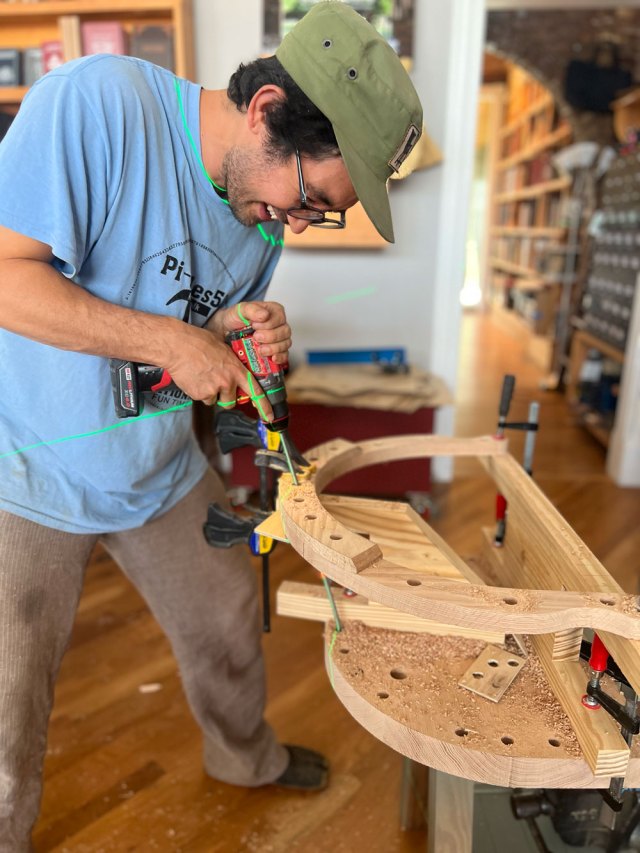
No matter how well you typically cut dovetails, sometimes the gods are simply not smiling upon you. I have days when I pick up my dovetail saw, make a few cuts and quickly realize that I should instead rough out lumber, clean out the offcut bin or do something else that doesn’t require precision. And I should drink less (or maybe more) coffee the next morning, then try again. But that isn’t always possible Sometimes, gaps happen.
They are not usually the end of the world, and I often simply ignore small ones. After all, time heals all wounds. Or fills them with dirt, anyway. And rarely have I seen such gappy joints, even from first-timers, that the project won’t stay together (glue is amazing stuff…and glue plus nails more amazing still!). Filling gaps is almost always an aesthetic, not structural, choice. But if I have to fix some gaps (or teach others how to fill gaps) below are a few ways I’ve been known to go about it.
Shims
I’ll start with my least favorite, which is gluing in wedges/shims. If your pins and tails aren’t at least a little bit proud (that is, they stick out beyond the mating surface), gluing a shim into the gap is pretty much the best way I know to hide it. And it is always, in my opinion, the best way to hide a gaping maw.
I grab whatever offcuts I can from my stock and cut a handful of shims in various thicknesses, hoping that I’ll end up with at least one of a given size to perfectly fill my gap(s). And I do my best to make sure that my offcut matches the color of the project where the gap is gaping. It does no good to insert a sapwood shim into a heartwood gap – instead of hiding the gap, it will draw attention to the fix. Ditto on the grain. I try hard to select an offcut that exhibits the same grain, so that the fix won’t show.

Then paint both sides of the shim/wedge (your shape needs may vary) with glue, and gently tap it into the gap. I recommend a small hammer and gentle use thereof; these small piece can easily break. Make sure to let the glue fully dry before flushing to the surface with a flush-cut saw. If you don’t wait, the glue will get into your saw teeth, then it won’t cut! (The hide glue I use is easy to remove when I’m overeager – a little hot water and a scrub with a toothbrush will clean the teeth, then I wipe the blade with an oily rag. For PVA, hot vinegar and more vigorous scrubbing does the trick – but the smell will give you away.)

Controlled Spelching
My usual fix for small gaps is to plane the end grain in the direction of the gap, hoping it will break off enough to fill said gap. Sometimes, it even works! But, you have to have enough material proud of the surface so that you can catch it with the blade to break it. If your joints are already flush, it’s back to the shims above.



Bishoping
I do not know the etymology of the term, but “bishoping” is just a fancy word for “mushrooming.” Get the end grain wet with water and let it soak in for a few minutes, then use a ball peen hemmer to tap the fibers and mushroom them to fill a small gap. But again, you have to have enough of a proud joint that your taps don’t cause a dent below the surface of the side.

What about glue and sawdust? Or wood filler? Like the toothpick mentioned in the caption above, those works only if the project will be painted. Glue will never take a finish, and no matter what the marketing says, neither will wood filler. At least not any that I’ve found.
– Fitz
p.s. Most of the gaps I’ve shown above in closeup likely wouldn’t show enough in the finished work to be worth fussing over. But some people like to fuss. This is for them.









